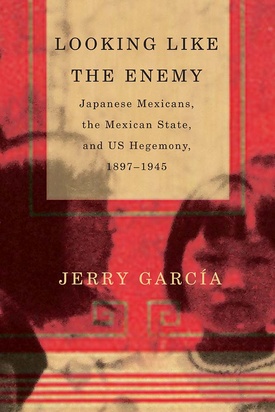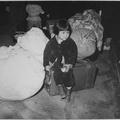At the heart of Jerry García’s book is an analysis of the experience of Japanese Mexicans during World War II. The author estimates that on the eve of the Japanese attack on Pearl Harbor the total number of Japanese immigrants and Japanese Mexicans was approximately 19,000, of which, more than two-thirds were Mexicans of Japanese ancestry.
After Mexico’s declaration of war in May 1942, their status became precarious. But their experience, García contends, was different from that of Japanese immigrants and their descendants in the United States, Canada, and Peru. The response of the Mexican state did not entail wholesale forced removal and mass incarceration at gunpoint. While the government did issue a directive to arrest, remove, and repatriate some of the Japanese nationals and Mexican-born Japanese, Mexico’s policy was hardly uniform. García’s attention to local circumstances makes his analysis compelling and helps him consider the broader context of Japanese immigrant settlement and acculturation process in Mexico during the first three decades of the twentieth century.
Particularly interesting is García’s discussion on the degree to which Japanese Mexicans achieved integration into local societies through naturalization and intermarriages with Mexican women. His argument is that variance in the Mexican case had much to do with this social process. Also important were their involvement in myriad social, political, and economic activities in places such as Chiapas—where the oldest Japanese immigrant enclave, the Enomoto Colony, was established in 1897—and during the turbulent era of the Mexican Revolution (1910-20). Furthermore, the image of a strong Japan in the competitive international system, combined with cordial relations between Mexico and Japan, prevented marginalization in Mexican society. These everyday particularities, as well as those in the realms of cultural representation and foreign relations engendered Mexican variance.
Yet, these particularities that make the Japanese experience in Mexico unique also fostered the aggressiveness with which the United States inserted itself in Mexico during World War II to wage a propaganda campaign against Japanese Mexicans. The result was a policy guided by a strong fear over the presence of “the fifth column” in the Japanese Mexican community. The primary preoccupation of both the United States and Mexico, thus, revolved around challenges of sifting the “Japanese enemy” from the indigenous population in Mexico. Meanwhile, the United States, throughout this period, exhibited longstanding distrust toward Mexico as an ally in the war against Axis Powers. Amid this harrowing climate, Japanese Mexicans organized self-imposed and semi-autonomous Hacienda camps to endure the ordeal, a largely untold account and by far the most fascinating section of this book.
While García presents a myriad of little known episodes throughout the book, Japanese Mexicans, unfortunately, rarely make a strong showing as historical agents. Their voices and historical memories are few and far between. Students of the history of what Erika Lee calls “Asian Americas,” thus, must find a way to resolve this problem, which is at once conceptual and methodological.
Looking Like the Enemy: Japanese Mexicans, the Mexican State, and US Hegemony, 1897-1945
By Jerry García
(Tucson: The University of Arizona Press, 2014)
* This book review was originally published in the Journal of American History (2014) 101 (3): 962. The Japanese American National Museum received permission from the Oxford University Press to share this review on Discover Nikkei for view only (Territory: World Language: English). For all other uses, please contact journals.permissions@oup.com for permissions.
© 2014 Yuichiro Onishi. Published by Oxford University Press on behalf of the Organization of American Historians. All rights reserved.




